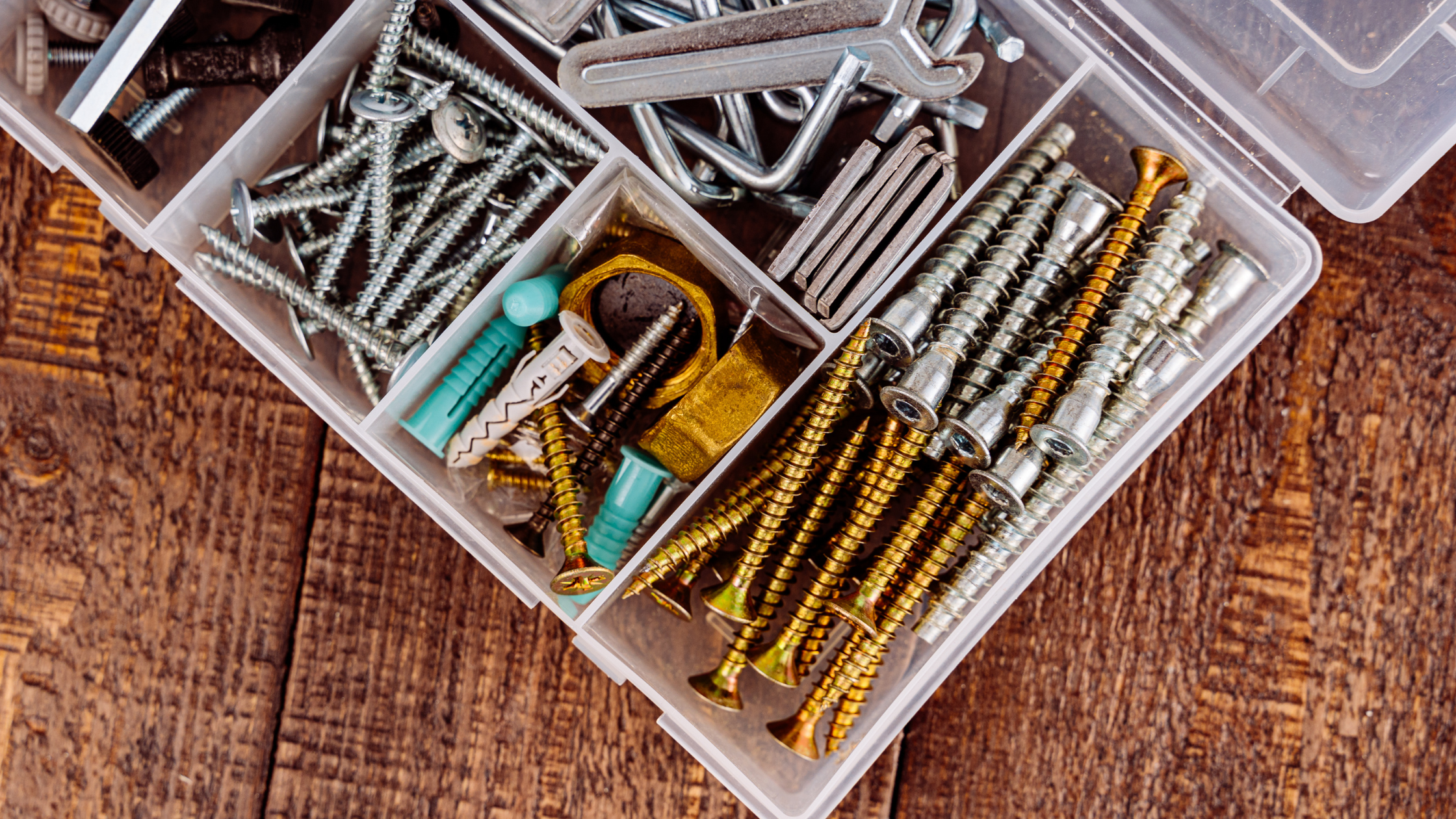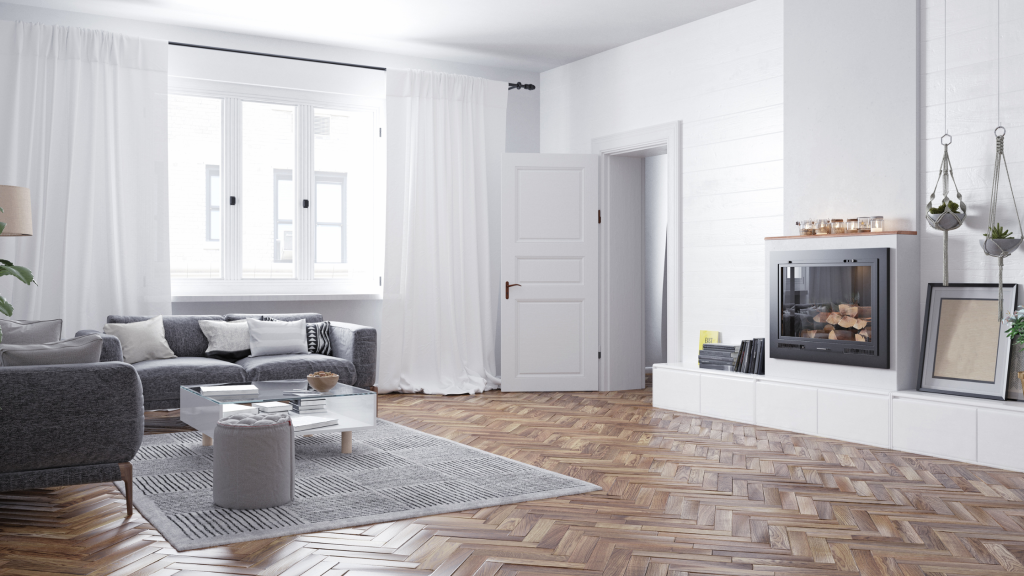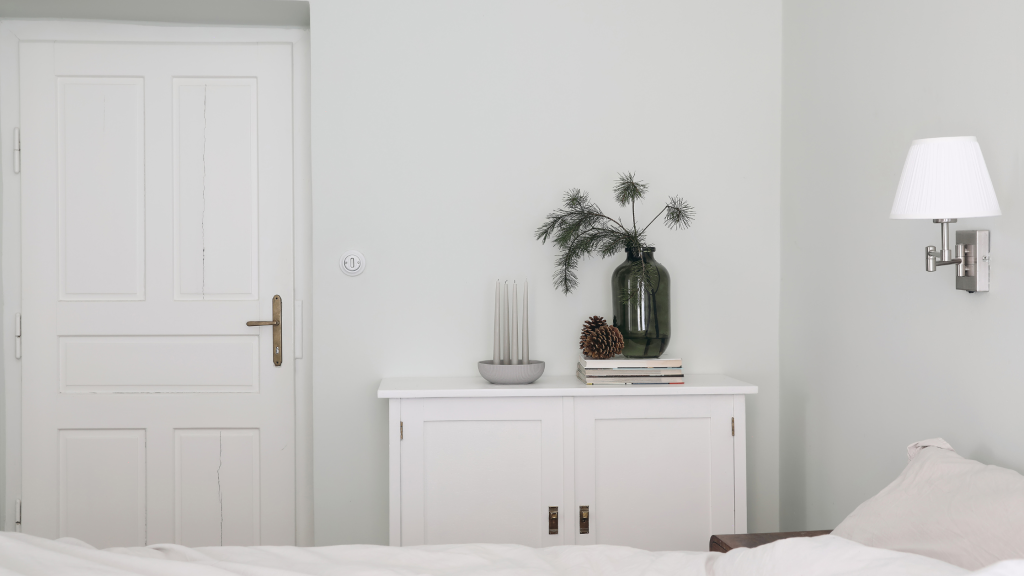Our Products
More Information
Email us: sales@climadoor.co.uk Need Help? Call us on: 0203 846 0345
Free, Fast Delivery Over £750
10 Year Guarantee
Price Match Promise
3500+ Doors Sold A Week
Expert Advice
Blog » DIY Basics: What Kind of Screws do I Need?

The humble screw – a tiny titan in the world of DIY. But with so many types of screw available and so many possibilities for DIY projects, it can be difficult deciding which fastener is best. So, if you’re embarking on a new task, refer to this guide and equip yourself with the knowledge required to conquer any screw situation.
Wood Screws
These workhorses of woodworking feature sharp points and deep threads for a secure grip in wood. They come in various lengths, diameters, and head styles (like flat or Phillips) to suit your needs.
Sheet Metal Screws
Designed for metal or attaching metal to other materials, these screws boast sharp points and fine threads for easy penetration. Self-drilling versions eliminate pre-drilling in thin sheet metal.
Plasterboard Screws
Recognisable by their bugle heads, these coarse-threaded screws fasten drywall to wood or metal studs. Their countersunk design creates a smooth finish once covered.
Lag Screws
These heavy-duty options, with large diameters and coarse threads, are ideal for high-strength applications like joining beams or creating sturdy outdoor furniture.
Machine Screws
Often used with nuts and washers, these feature uniform diameters and finer threads. They excel in metal-to-metal applications or for creating adjustable joints.

Material matters
Are you working with wood, metal, plaster, or a combination? Different materials require specific screw types – wood screws for wood, sheet metal screws for thin metal, plasterboard screws for attaching plaster, and machine screws for metal-to-metal applications.
Think about the application
What purpose does the screw serve? Is it for hanging something (like a door hinge), creating a strong joint (like lag screws for beams), or simply fastening two things together? Different applications benefit from specific screw designs – flat head screws for concealment, coarse threads for strong holding power, or self-drilling options for eliminating pre-drilling needs.
Size it up
Screw size refers to both length and diameter. Length should allow the screw to penetrate deeply into the base material (think half the thickness for wood) while not protruding from the other side. Diameter ensures a secure grip – thicker screws for heavier objects or stronger joints.
Match the head style
This is more about personal preference and functionality. Flat head screws sit flush, Phillips heads are easy to drive with a screwdriver, and hex heads offer a strong grip for tightening with an Allen wrench.
By considering these factors – material, application, size, and head style – you’ll be well-equipped to choose the perfect screw for any DIY project.
Wood Screws
Your go-to choice for attaching hinges to both the door frame and the door itself. Opt for flat head screws for a concealed look or Phillips head screws for easier driving. Choose a screw length that penetrates roughly half the thickness of the door/frame where it attaches to the hinge.
Plasterboard Screws
If your door frame is made of metal studs, plasterboard screws (sometimes referred to as drywall screws) are your champions. Their fine threads create a secure hold and their bugle heads create a clean, countersunk finish once covered with trim.
Lag Screws (Optional)
For particularly heavy doors or installations requiring extra strength, consider lag screws for hinge attachment. Pre-drilling is crucial here to prevent wood splitting.
Top tip: Always check the manufacturer’s instructions for your specific door and hinges for recommended screw sizes and types.

While both screws and nails can be used for some door installations, screws are generally the preferred choice for hanging interior doors.
Screws offer several advantages: superior holding power due to their threads, the ability to adjust and remove them if needed during levelling, and a tighter overall fit that minimises creaking over time.
Nails, while faster to install initially, can loosen and cause the door to wobble. However, for very lightweight hollow core doors or temporary installations, nails might be sufficient.
Ultimately, the best choice depends on the weight of the door, the desired level of adjustability, and the long-term stability you seek.
When it comes to reinforcing a door for security, screw size is crucial. You want screws that are long enough to penetrate deeply into the stud behind the door jamb or frame, not just hold onto the jamb itself.
Generally, for reinforcing tasks, 3-inch screws are recommended. These screws will reach past the jamb and embed themselves firmly within the stud, providing a solid anchor point for the door.
However, it’s important to consider your specific door construction. If your door frame is thin or uses only narrow studs, a 3-inch screw might be overkill or even cause the wood to split. In such cases, a slightly shorter screw like 2.5 inches might be a better option.
Always double-check the thickness of your door jamb and stud before purchasing screws to ensure they effectively reinforce your door without damaging the frame.
Best Screws for Internal Door Hinges
For internal door hinges in the UK, the most common screw sizes are No. 7 x 1 inch (or 2.8 x 25mm) and No. 8 x 1 ¼ inch (or 3.1 x 32mm). These sizes offer a good balance between holding power and suitability for typical door frame thicknesses (usually around ¾ inch to ⅞ inch).
Best Screws for Exterior Door Hinges
For external doors, which are generally heavier and require a more secure fixing, No. 10 x 1 ¼ inch (or 3.5 x 32mm) screws are a better choice. They provide additional strength for the heavier doors and ensure a solid hold against potential weather elements.

The ideal screw size can vary depending on factors including door material, hinge size and the thickness of both the door and door frame.
Hinge size
Larger hinges might require slightly longer screws for proper engagement.
Door and frame thickness
Measure your specific door frame thickness to ensure the screw doesn’t protrude through the other side.
Material
If your door frame is metal, you might need self-tapping screws or wood screws with appropriate threads for metal applications.
For best results, consult the hinge manufacturer’s recommendations or take a sample hinge to the hardware store to ensure compatibility and choose the most suitable screw size for your DIY project.

By understanding the different types of screws and their applications, you’ll be well on your way to tackling any DIY project with confidence. Grab your screwdriver (or drill), choose the right screw and get ready to unleash your inner home improvement hero.
Brush up on more DIY basics with our handy guides. Learn about the different types of wood, find out to paint interior woodwork for a fresh look and see which interior doors are best for your next project.






Reasons to shop
with us
Specialist suppliers of high quality, internal and external folding and french doors. Buy direct for the best price.
Nationwide
Delivery
Delivery to most mainland UK postcodes within 3-7 working days. Free delivery on orders over £750.
The Climadoor
Guarantee Promise
All of our doors and hardware are guaranteed for ten years against the occurrence of manufacturing faults.

0203 846 0345
Telephone: 0203 846 0345 Email:
sales@climadoor.co.uk ©Climadoor Ltd 2021. All rights reserved.
Showroom: Unit 2 Sinfin Central Business Park, Sinfin Lane, Derby DE24 9HL. Buy online or via selected stockists: Vibrant
Doors / Express Doors Direct / Vivid
Doors
Terms & ConditionsRefunds & ReturnsOur Guarantee PromisePrivacy PolicyClimadoor Voucher Codes Sitemap

Please contact us for details regarding our FSC® certified products.

Choosing the perfect bifold door for your space can be challenging with so many options available. Our Roomfold Comparison table is here to simplify the process, providing a side-by-side breakdown of the key features, specifications, and benefits of our Roomfold Standard, Deluxe, and Grande systems. Whether you’re prioritising size, finishes, or hardware, this detailed comparison will help you find the ideal solution tailored to your needs.
| Roomfold Standard | Roomfold Deluxe | Roomfold Grande | |
|---|---|---|---|
| Size Width Options | 1215mm - 3502mm | 1218mm - 4652mm | 836mm - 3891mm |
| Available Finishes | Unfinished Oak, Prefinished Oak, & White Primed | Unfinished Oak, Prefinished Oak,& White Primed | Unfinished Oak, Prefinished Oak, White Primed, Black |
| Door Options | 3,4, and 5 door options. | 3,4,5 & 6 door options | 2,3,4 and 5 door options |
| Trimming Ability - Height | 20mm on height (contact us for details, as some sets can be trimmed more than this) | 20mm on height (contact us for details, as some sets can be trimmed more than this) | 20mm on height (contact us for details, as some sets can be trimmed more than this) |
| Trimming Ability - Width | 20mm on 2 doors and then an extra 10mm per door thereafter. Where individual door leaf sizes are 686mm or bigger the trim allowance is 20mm per leaf - equal amounts off each side of the door. | 20mm on 2 doors and then an extra 10mm per door thereafter. Where individual door leaf sizes are 686mm or bigger the trim allowance is 20mm per leaf - equal amounts off each side of the door. | 20mm on 2 doors and then an extra 10mm per door thereafter. Where individual door leaf sizes are 686mm or bigger the trim allowance is 20mm per leaf - equal amounts off each side of the door. |
| Frame Depth | 78mm | 78mm | 133mm |
| Frame Height | 2078mm | 2078mm | 2060mm |
| Hardware | Top Hung only, with floor mounted pivot. | Top Hung, bottom guided, with 20mm high low level guide rail. Ideal for running different floorings up to each side. | Top Hung, with jamb mounted bottom pivot. Ideal for fitting on top of existing floorings, where the flooring finish is the same both sides of the door set. Or ideal on top of tiled floors. |
| Hardware Adjustment | Height - 6mm | Height - 6mm | Height - 10mm |
| Supplied with Drop Bolts | No | Yes | Yes |
| Delivery / Collection | Delivery £60, Collection free from either DE24 9HL, or S44 5HS, after order. All orders over £750 are free delivery. | Delivery £60, Collection free from either DE24 9HL, or S44 5HS, after order. All orders over £750 are free delivery. | Delivery £60, Collection free from either DE24 9HL, or S44 5HS, after order. All orders over £750 are free delivery. |
| Guarantee | 10 years against manufacturing defects | 10 years against manufacturing defects | 10 years against manufacturing defects |
| Bespoke Service Available (24 week lead time) | No | No | Yes |
| Key Features and Benefits | Pairmaker not supplied on “meeting door” configurations. Frame always supplied in an unfinished Oak for on-site decorating no matter the door finish. Face fit hinges and hinge handle. Ideal for customers that will have the doors in their fully open or fully closed position 90% of the time and not using the mechanism on a regular basis. Perfect for closing off a room ona budget renovations/ offices. Will allow through flooring. | Frame supplied matching the door finish chosen. Can fill larger openings as the bottom track allows up to six door systems. Smooth operation at larger total widths with connection to the head and base track on the end of every other door. Face fit hinges and hinge handle. Ideal for customers changing flooring between rooms as the 20mm high 74mm deep low-level threshold gives a clean break between flooring. A robust, cost-effective system. | Frame supplied matching the door finish chosen. Superior “external grade” hardware allowing an incredibly smooth operation with no need for a base track. Face fit hinges and hinge handle including an offset hinge system which allows the doors to stack more compact than the other Roomfold options. Supplied with door stops across the whole internal rebate of the frame leaving no gaps at the top between top edge of the doors and underside of the track meaning they will offer more in terms of heat retention and sound reduction between rooms. More opening options that can suit any home. Our highest specification system with upgraded, stylish hardware. |
| Overall Rating |